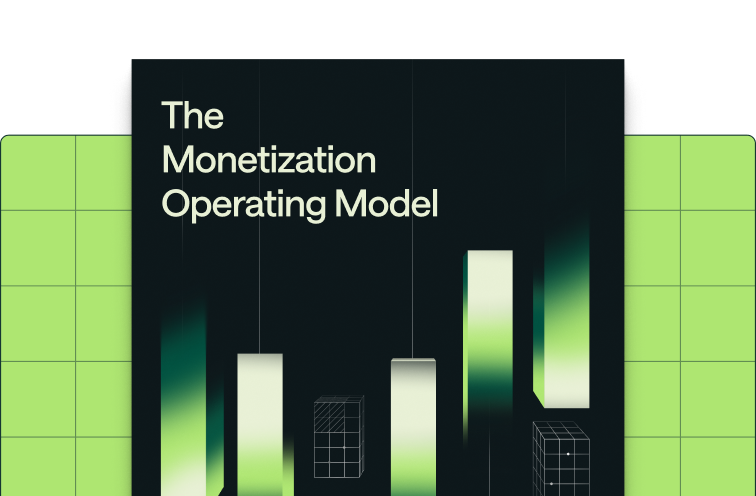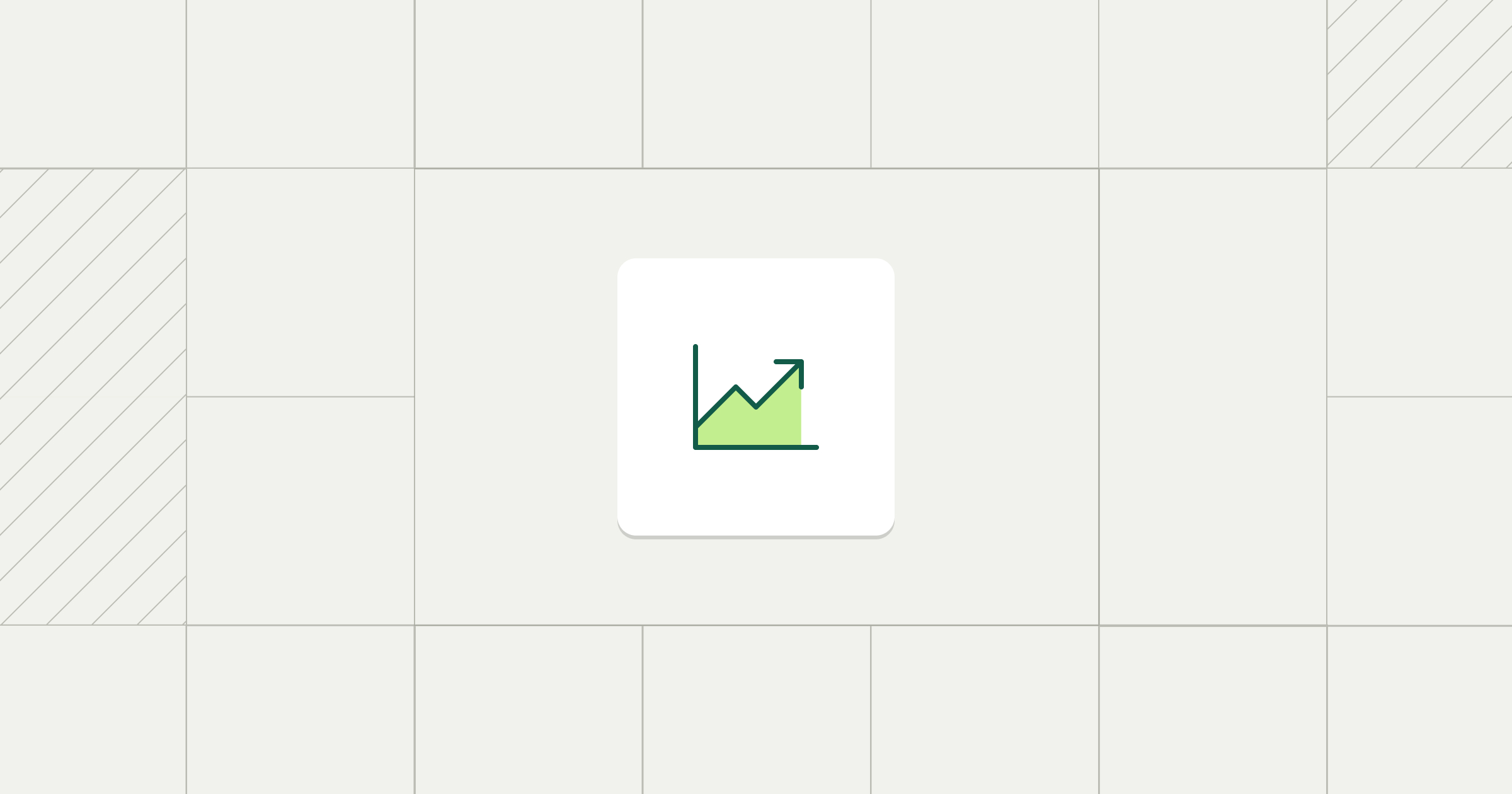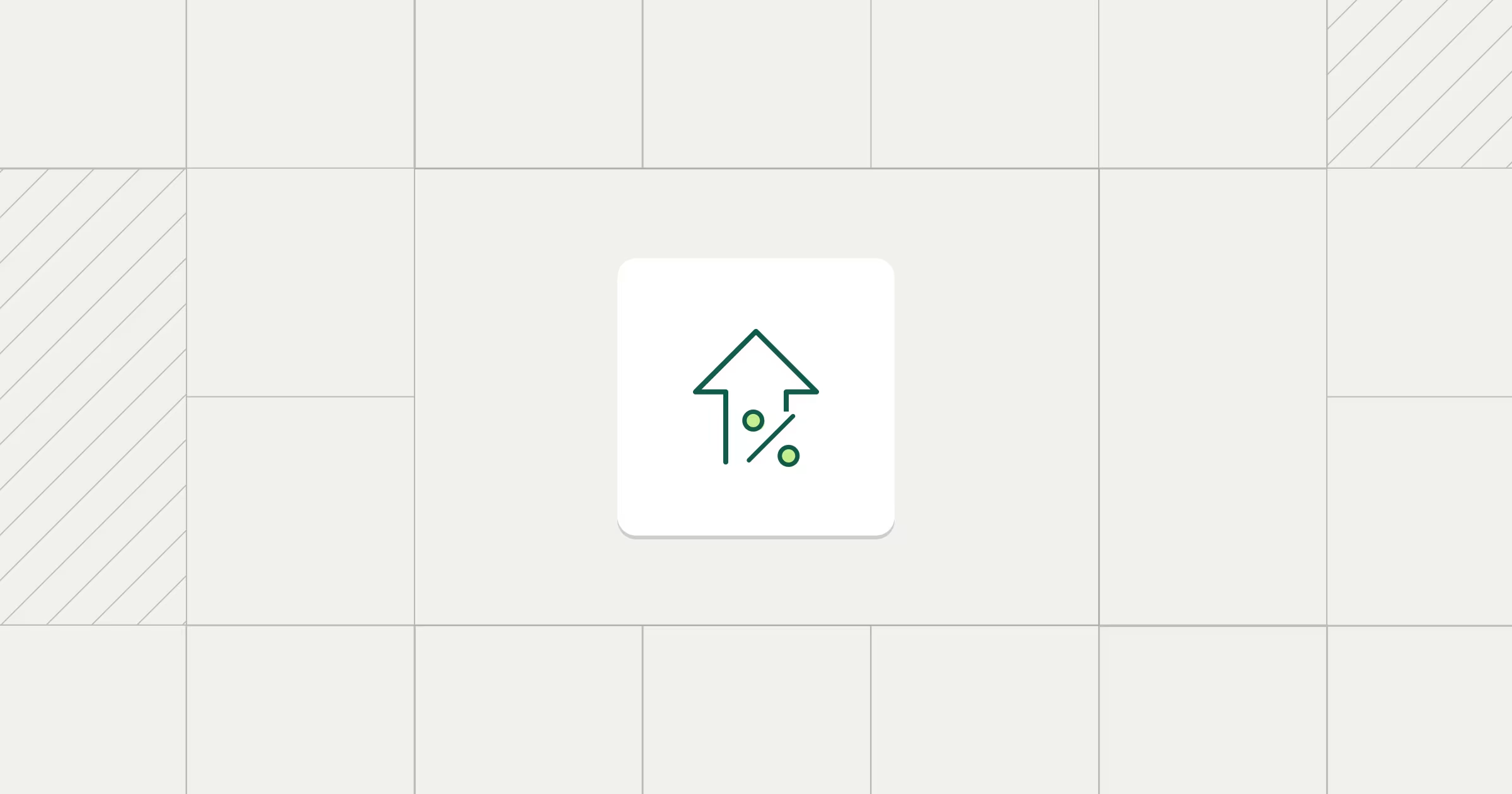Share
What is usage-based billing?
Usage-based billing is a pricing model where customers pay based on their actual consumption of a product or service rather than fixed subscription fees.
Companies track specific usage events like API calls, data processed, compute hours, or features accessed, then apply pricing rules to convert that usage into billing amounts.
Usage-based billing helps align pricing more closely with the value customers receive.
In contrast, a traditional billing system generally charges customers for access—i.e., per seat, per month—regardless of usage levels. With subscriptions, a customer who makes 100 API calls pays the same as one who makes 100,000 calls.
Here’s an example:
- Traditional subscription: $1,000/month for platform access
- Usage-based billing: $0.05 per API call + $2 per GB processed
The key characteristics that define usage-based billing include:
- Metering usage in real-time
- Variable pricing based on consumption levels
- Pay-as-you-grow alignment, where costs scale with customer value received
Usage-based billing is widely adopted by AI and cloud companies like OpenAI and Databricks because their products deliver variable value based on consumption, and because these companies have significant variable infrastructure costs that need to be managed.
When customers use more compute power, process more data, or make more API calls, they receive more value and pay accordingly—while the company's costs also scale with that usage.
{{widget-monetization-whitepaper}}The pros and cons of usage-based billing
Usage-based billing helps software companies match pricing to the value customers actually receive. It’s a powerful model for driving expansion, reducing entry barriers, and supporting AI-driven and infrastructure-heavy products.
But it also comes with trade-offs, especially around predictability and complexity.
This is why Metronome supports both usage-based and flat-rate billing. Companies using Metronome can launch with simple subscription plans, experiment with hybrid models, or fully embrace usage-based pricing as they scale.
For many teams, the right move isn’t choosing one model. It’s building infrastructure that lets you evolve as the business changes.
Here’s where usage-based billing shines, and where it can create friction.
The pros of usage-based billing
Usage-based billing works best when pricing needs to scale with customer value. It helps companies grow revenue efficiently, reduce sales friction, and deliver pricing that customers understand and trust.
Here are the key advantages:
- Revenue expands automatically when customers use more of your product, no extra sales motion required.
- Lower barriers to entry make it easier for customers to try your product without large upfront commitments.
- Transparent pricing builds trust by letting customers pay only for what they actually use.
- Value-based alignment ensures high-usage customers contribute more revenue, especially important for AI, cloud, and data-heavy products.
- Greater flexibility lets you tailor pricing by customer segment, usage tier, or go-to-market channel—without overhauling your billing system.
Usage-based billing gives companies a scalable foundation for growth—but it’s most effective when paired with the right infrastructure to support real-time data, flexible pricing logic, and visibility for both internal teams and customers.
The cons of usage-based billing
While usage-based billing offers flexibility and strong alignment with customer value, it also introduces challenges—particularly around predictability, complexity, and customer communication.
Here are the most common drawbacks:
- Unpredictable revenue makes it harder to forecast monthly recurring revenue (MRR), especially when usage patterns vary month to month.
- Customer anxiety can result from unclear bills or unexpected charges, especially without real-time usage visibility.
- Increased operational complexity requires coordinated systems for metering, pricing, invoicing, and revenue recognition.
- Not ideal for every product because some offerings don’t lend themselves to a clean usage metric, making pricing harder to explain or justify.
- Risk of undercharging if usage-based pricing doesn’t fully capture the value your product delivers.
These trade-offs don’t make usage-based billing a bad model. But they do mean it isn’t a drop-in replacement for subscriptions. Teams need the right visibility, systems, and strategy to make it work at scale.
How usage-based billing works
Usage-based billing typically involves four key components working together to track consumption, apply pricing, and generate accurate bills.
Metering
Metering captures and tracks usage events in real-time. This means recording every API call, measuring data processed in gigabytes, counting compute hours consumed, or tracking tokens used in AI applications.
Your metering system needs to handle high-volume event ingestion, data aggregation across time periods, and usage validation to ensure accuracy. For example, AWS tracks EC2 instance usage per second, OpenAI meters API tokens consumed, and Snowflake measures compute credits used for data processing.
Rating and pricing logic
Rating applies pricing rules to usage data to calculate billable amounts. This includes handling complex pricing structures such as tiered rates, volume discounts, and customer-specific pricing—far beyond simple per-unit calculations.
Examples include flat rates like $0.10 per API call, tiered pricing where the first 1,000 calls cost $0.15 each and the next 5,000 cost $0.10 each, or hybrid models combining base fees with usage charges. You also need to manage regional pricing variations, enterprise commitment discounts, and custom rates for specific customers.
Billing cycles and invoicing
The billing system aggregates usage over defined time periods, then generates invoices based on that data. This requires decisions about whether to process usage in real-time or batch intervals, and billing frequency, like monthly or quarterly cycles.
Your invoices need to include usage summaries that show what customers consumed,line items showing usage quantities, rates, and total charges, and any credits or adjustments applied. The system must integrate with revenue recognition systems, payment processing, and customer notification workflows.
Usage tracking and customer transparency
Customer transparency provides visibility into consumption and costs through dashboards and reporting. Customers need real-time usage monitoring, spending controls to prevent bill shock, and alerts when usage approaches certain thresholds.
Effective reporting includes usage analytics that help customers optimize their consumption, cost recommendations based on usage patterns, and proactive notifications about usage spikes or billing changes.
How to set up usage-based billing
Usage-based billing only works when your systems can track consumption accurately, price it correctly, and communicate it clearly to customers.
Traditional billing tools rarely support this out of the box, meaning you’ll need specialized infrastructure to make it work at scale.
1. Build the right technical foundation
Start with a metering system that can capture usage events as they happen, whether that's API calls, compute time, or gigabytes processed.
While most companies don't need true real-time processing, near real-time or high-frequency batching ensures customers see accurate usage data with minimal delay.
Next, make sure your data infrastructure can ingest and process millions of events without latency or data loss. This means designing for scale from the outset, especially if your usage is bursty or event-heavy.
Your pricing engine also needs to be flexible. It should allow your team to configure and update pricing rules, like tiered rates, volume discounts, or custom enterprise pricing, without relying on engineering support every time you want to make a change.
Finally, connect your billing system to the rest of your financial stack. You’ll need clean integrations with your CRM, accounting software, payment processors, and reporting tools to generate accurate invoices, recognize revenue, and surface usage insights for customers.
2. Define what to meter
Choose usage metrics that reflect customer value, not just internal system activity.
For example, if a company provides video transcription services, charging for completed transcriptions gives customers a clear link between what they pay and the outcomes they receive. Charging for CPU seconds used during processing, on the other hand, ties pricing to something abstract and infrastructure-focused—something most customers neither understand nor care about.
CPU-based pricing might make sense for an infrastructure company selling compute resources, but for a transcription service, outcome-based pricing creates a better customer experience.
Once you've identified the right value metric, define clear measurement units like API calls, gigabytes processed, or active users per month. Instrument your product to capture this data accurately and efficiently, without introducing performance tradeoffs or gaps in visibility.
You’ll also need a way to instrument and collect this usage data. Some teams build custom tracking pipelines, while others use platforms like Metronome to handle high-volume event ingestion and aggregation without adding performance overhead.
3. Design pricing structure
Create pricing tiers that serve different customer segments from startups to enterprises. Build in volume discounts that reward high-usage customers and commitment options that provide predictable revenue.
Plan for regional variations in pricing and enterprise customizations that large customers often require. Your pricing structure should be simple enough for customers to understand but flexible enough to handle complex business requirements.
4. Build billing operations
Set up real-time usage tracking and aggregation systems that scale with your expected volume and growth. Add customer-facing usage dashboards to provide transparency and spending controls.
Define clear billing cycle processes and generate automated invoices that connect seamlessly with your financial systems. Many companies choose to buy this infrastructure instead of building it in-house, especially when billing becomes too complex to manage manually.
Modern platforms can process high-volume usage events, apply complex pricing rules, generate invoices, support revenue recognition, and give customers real-time insight into their consumption.
5. Help customers understand and optimize usage
Provide usage analytics and optimization recommendations that help customers get more value while managing costs effectively. Create clear documentation and billing explanations that customers can easily understand.
Establish processes for handling usage disputes and adjustments quickly and fairly. Customer success becomes critical in usage-based models because billing transparency directly affects customer satisfaction and retention.
Industry examples of usage-based pricing
Usage-based billing is now the norm in categories where customer value scales with consumption. Here’s how leading software companies have implemented it:
- Cloud infrastructure: AWS introduced per-second billing for EC2 instances in 2017. Instead of hourly increments, Amazon now bills EC2 usage in one-second intervals (with a 60-second minimum), aligning cost precisely with compute consumption.
- AI and APIs: OpenAI prices access to its models based on tokens used, with separate input and output rates for each language model. This token-based pricing directly reflects how much value customers extract from the API.
- Data processing: Snowflake uses a credit-based model that charges for compute usage per second. Credits are consumed as virtual warehouses perform tasks like loading data or running queries, with billing starting at a 60-second minimum.
- Communications: Twilio pioneered pay-per-use billing in telecom by charging per SMS sent. This model replaced flat platform fees and let customers scale costs directly with communication volume.
These examples show how usage-based billing helps companies align pricing with real customer value. Whether it’s compute time, API tokens, or messages sent, billing by consumption creates transparent, scalable models that grow with the customer.
As more products deliver outcomes rather than just access—especially in AI and infrastructure—usage-based billing will only become more foundational to software monetization.
The future of software monetization
Usage-based billing has become the preferred monetization model for companies delivering variable value through software. As AI and cloud-native applications continue to reshape how software creates value, pricing models that align costs with consumption will become increasingly important.
Success with usage-based billing requires more than changing pricing models. You need sophisticated infrastructure to meter usage accurately, apply pricing rules flexibly, and provide customers with transparency and control over their costs.
The companies that master usage-based billing will capture more value from their products while building stronger customer relationships through fair, transparent pricing that aligns with actual value delivered.
Want to go deeper? Get early access to Metronome’s upcoming whitepaper and see how to make the shift.
Usage-based billing frequently asked questions (FAQs)
How does usage-based billing differ from subscription pricing?
Usage-based billing charges customers based on actual consumption, while subscription pricing charges fixed amounts regardless of usage levels. Usage-based models align costs with value received, making pricing fairer and more transparent.
What types of usage metrics work best?
The best usage metrics are those that reflect how your customers derive value from your product. This often means focusing on externally meaningful metrics like API calls, data processed, transactions completed, or active users, rather than purely internal metrics like server CPU usage or storage consumed. That said, the right metric depends on your business model. For some companies, infrastructure usage is a core value driver. The key is choosing metrics that make sense for your business and map closely to how customers perceive value.
How do you prevent bill shock with variable pricing?
Provide real-time usage dashboards, spending alerts at configurable thresholds, and spending controls that let customers set usage limits. Proactive communication about usage spikes helps customers manage costs effectively.
Can usage-based billing work if you have a small business?
Yes, usage-based billing often works better for small businesses because it eliminates large upfront costs and lets them start small. Small businesses appreciate paying only for what they actually use rather than over-provisioning capacity.
What infrastructure do you need for usage-based billing?
You need real-time metering systems, flexible pricing engines, scalable data processing, accurate billing generation, and customer-facing usage dashboards. Many companies use purpose-built platforms rather than building these systems internally.
{{widget-monetization-whitepaper}}







%25202%2520(1).png)
.avif)

